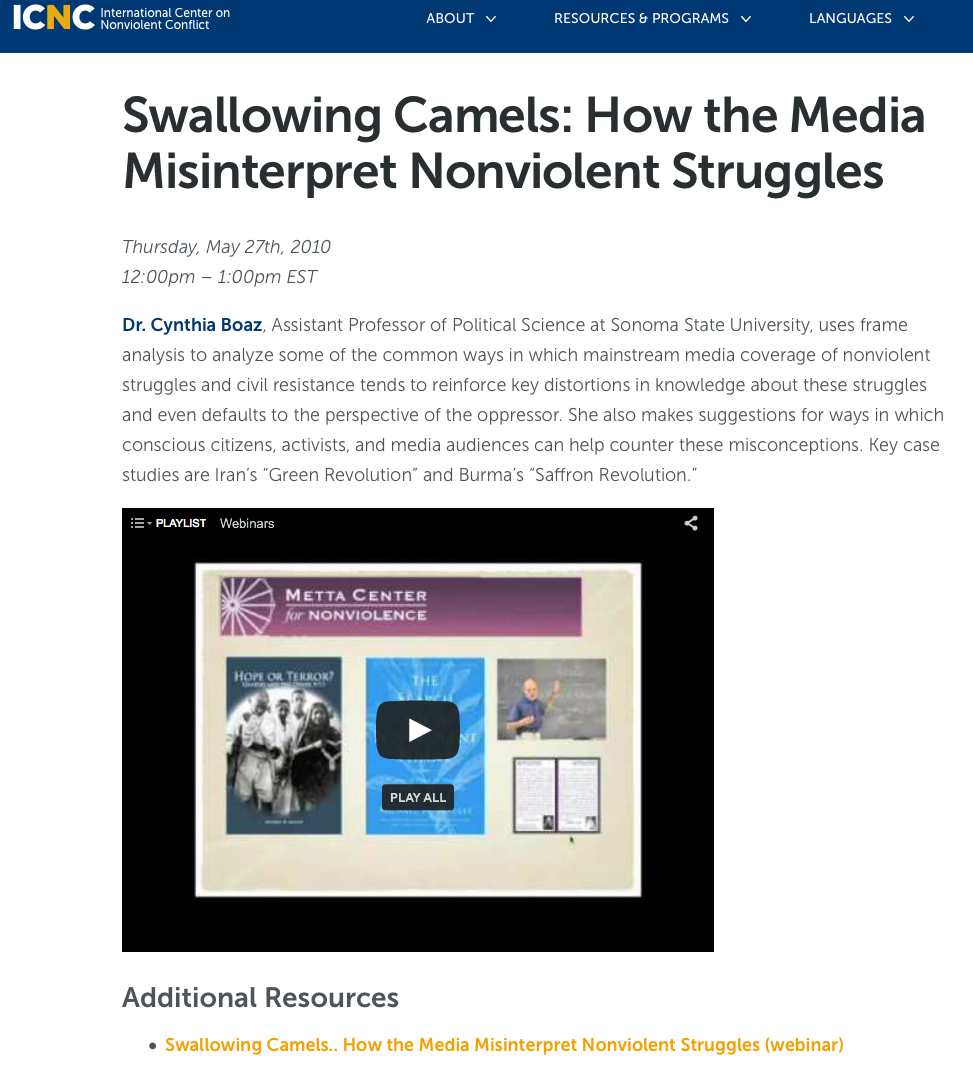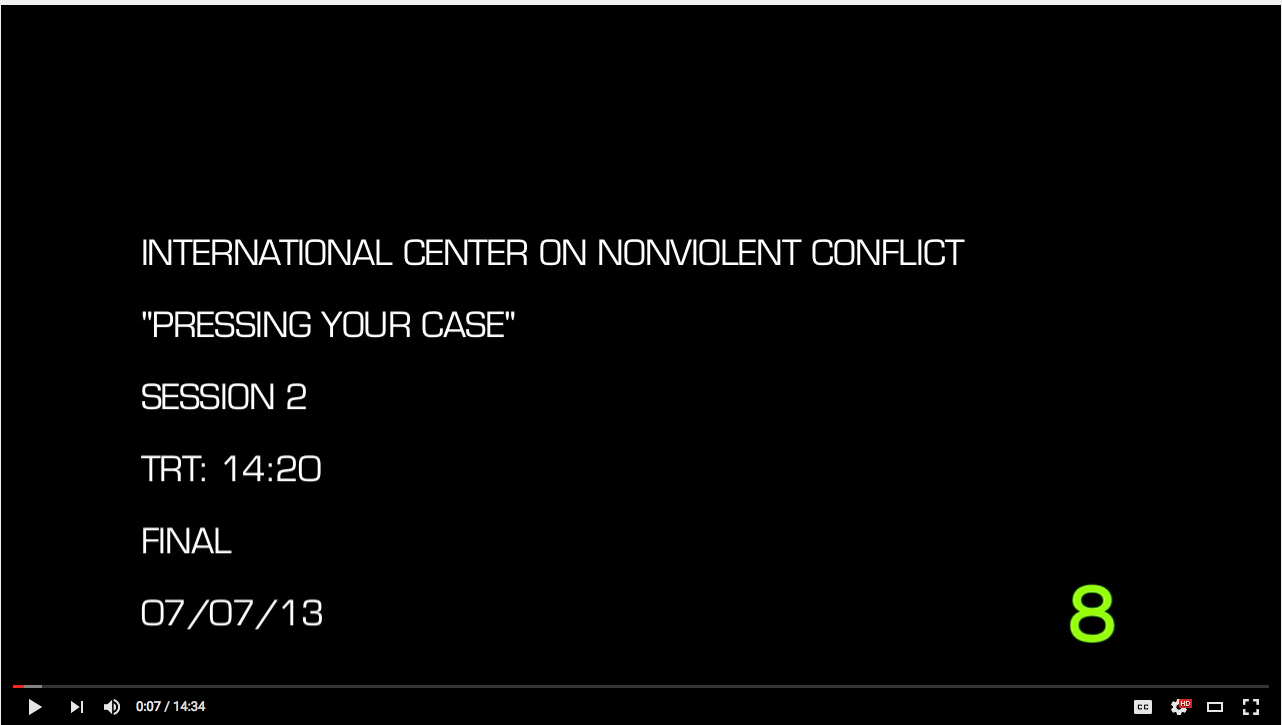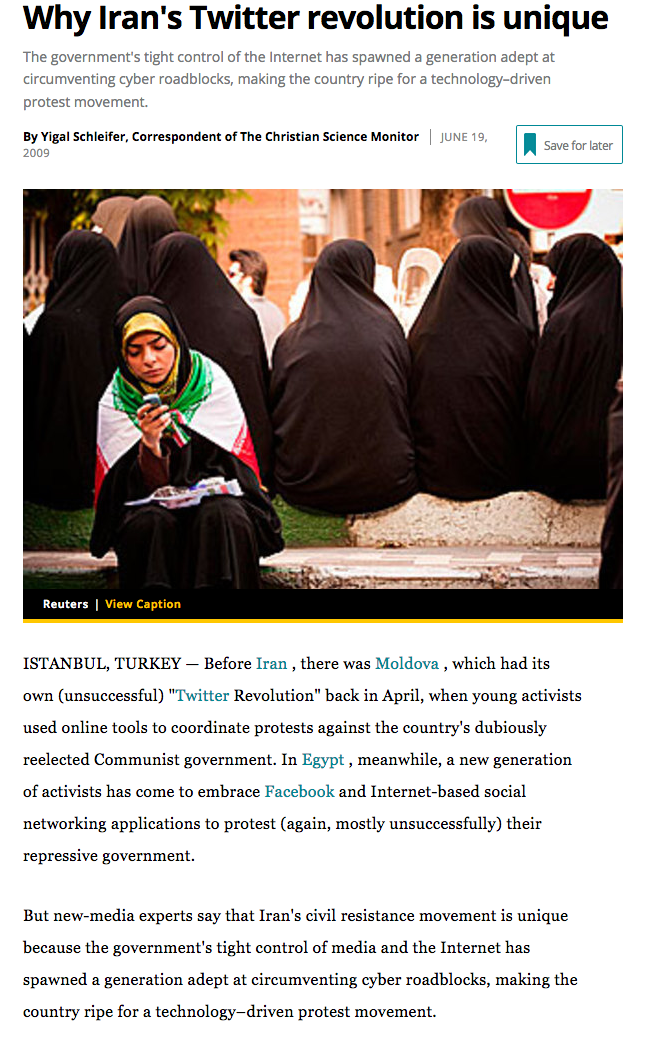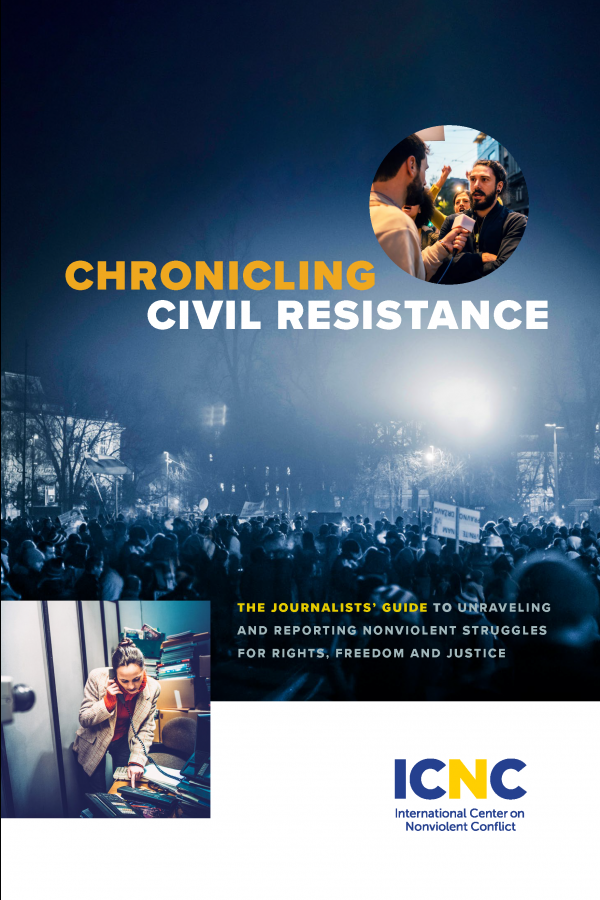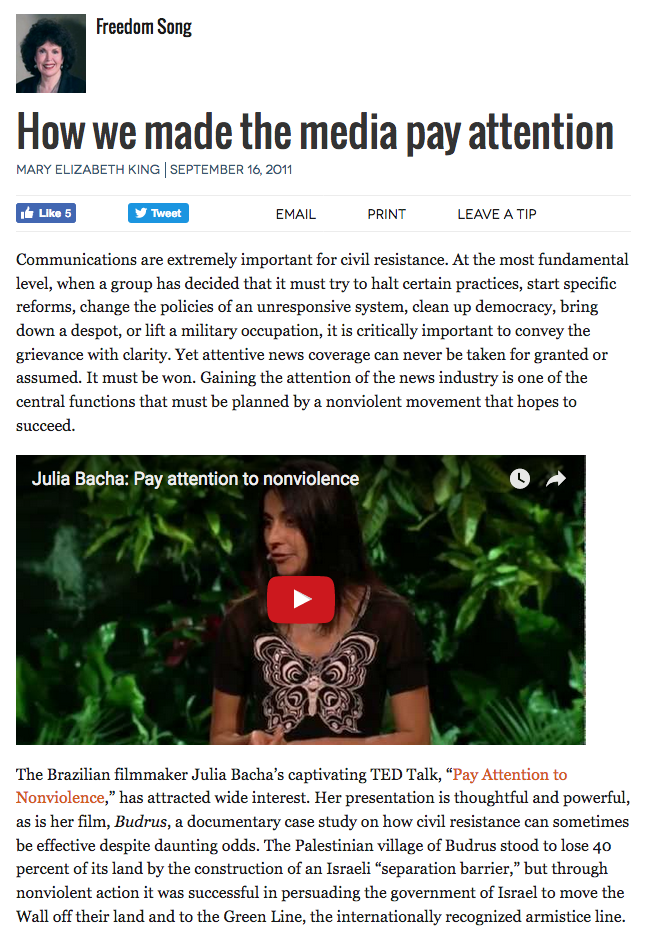
How We Made the Media Pay Atttention
Communications are extremely important for civil resistance. At the most fundamental level, when a group has decided that it must try to halt certain practices, start specific reforms, change the policies of an unresponsive system, clean up democracy, bring down a despot, or lift a military occupation, it is critically important to convey the grievance with clarity. Yet attentive news coverage can never be taken for granted or assumed. It must be won. Gaining the attention of the news industry is one of the central functions that must be planned by a nonviolent movement that hopes to succeed.
wagingnonviolence.org, September 16, 2011
